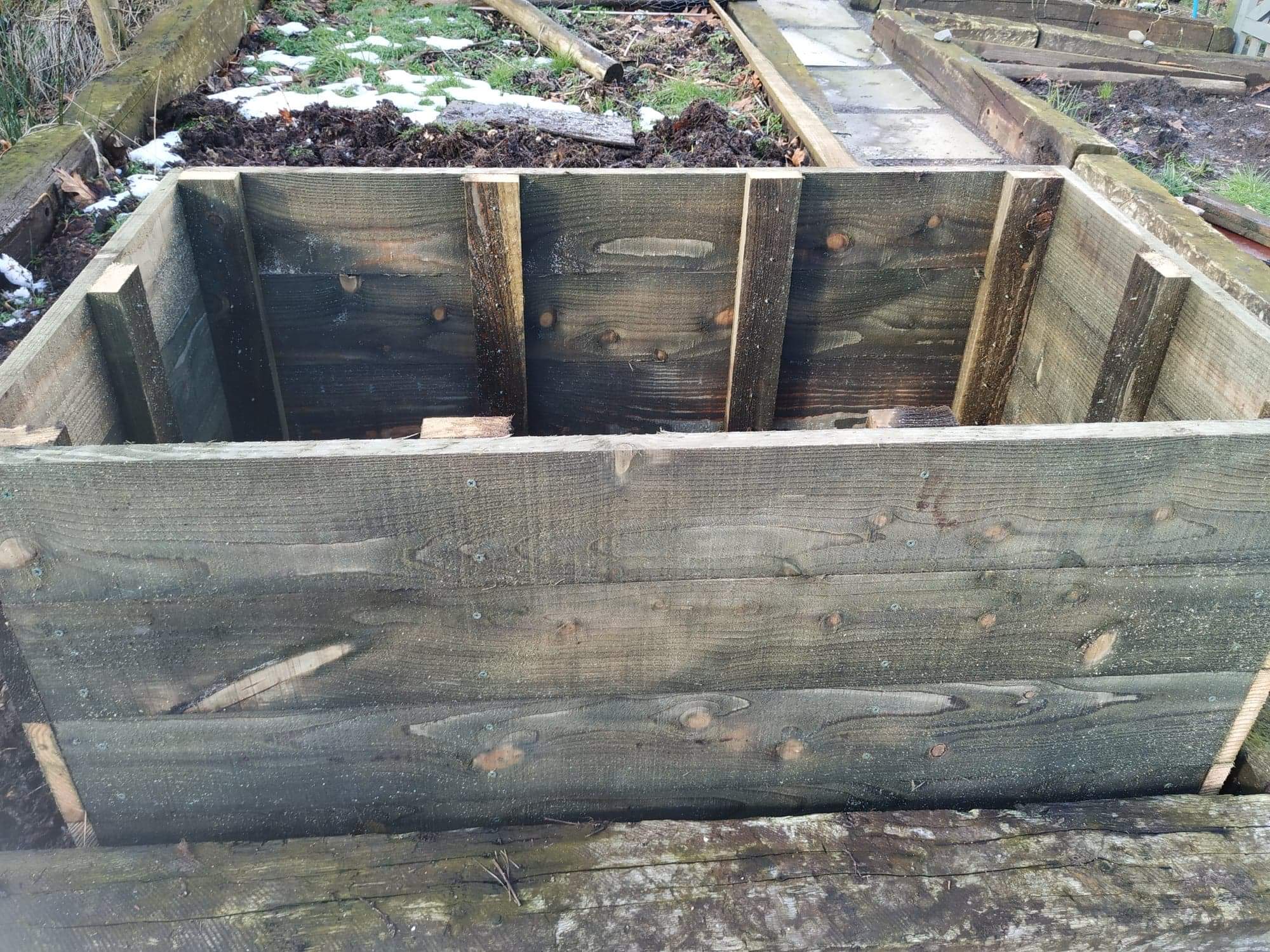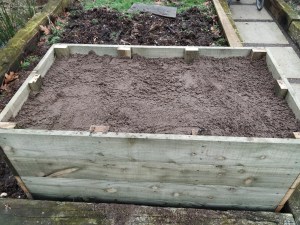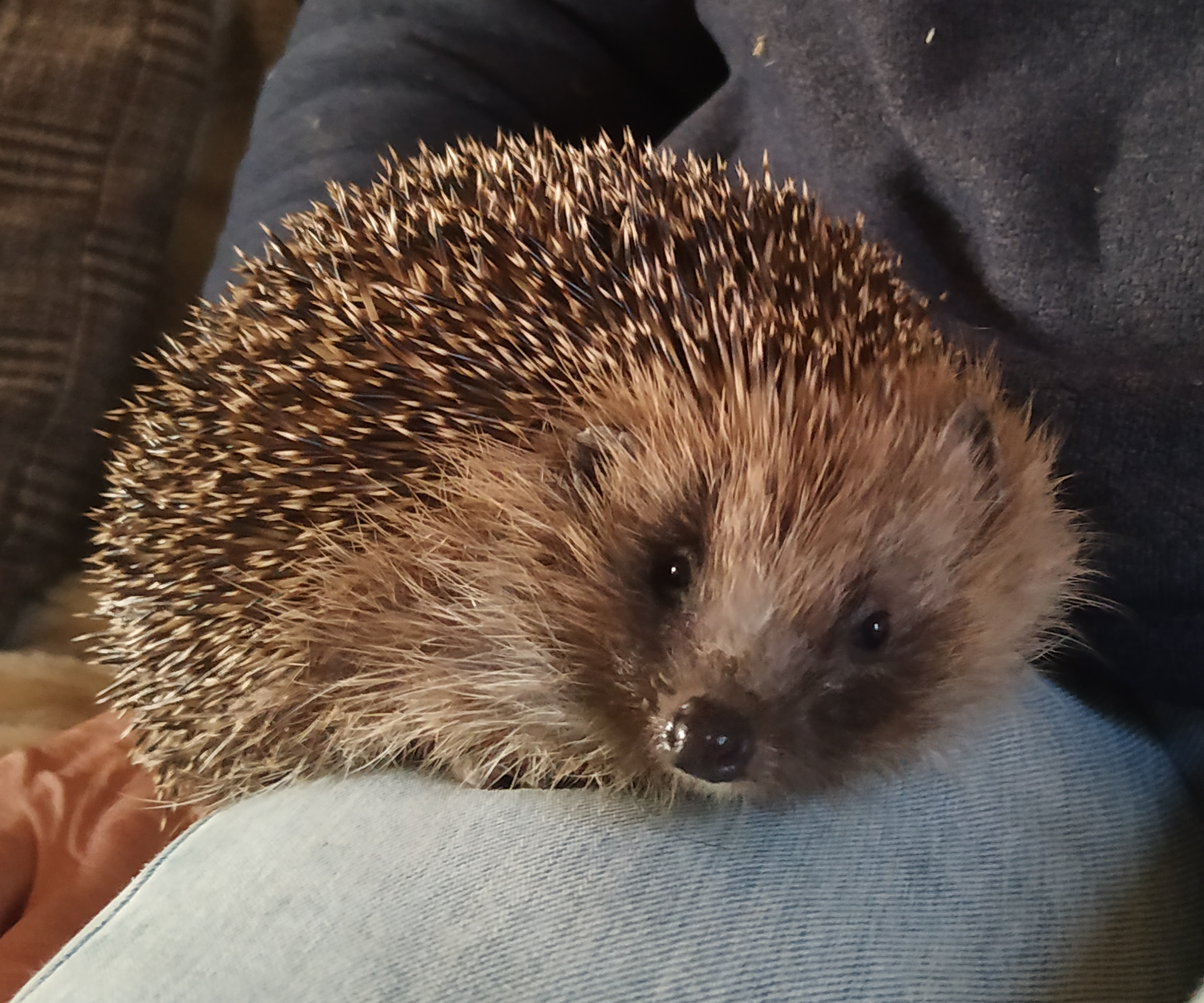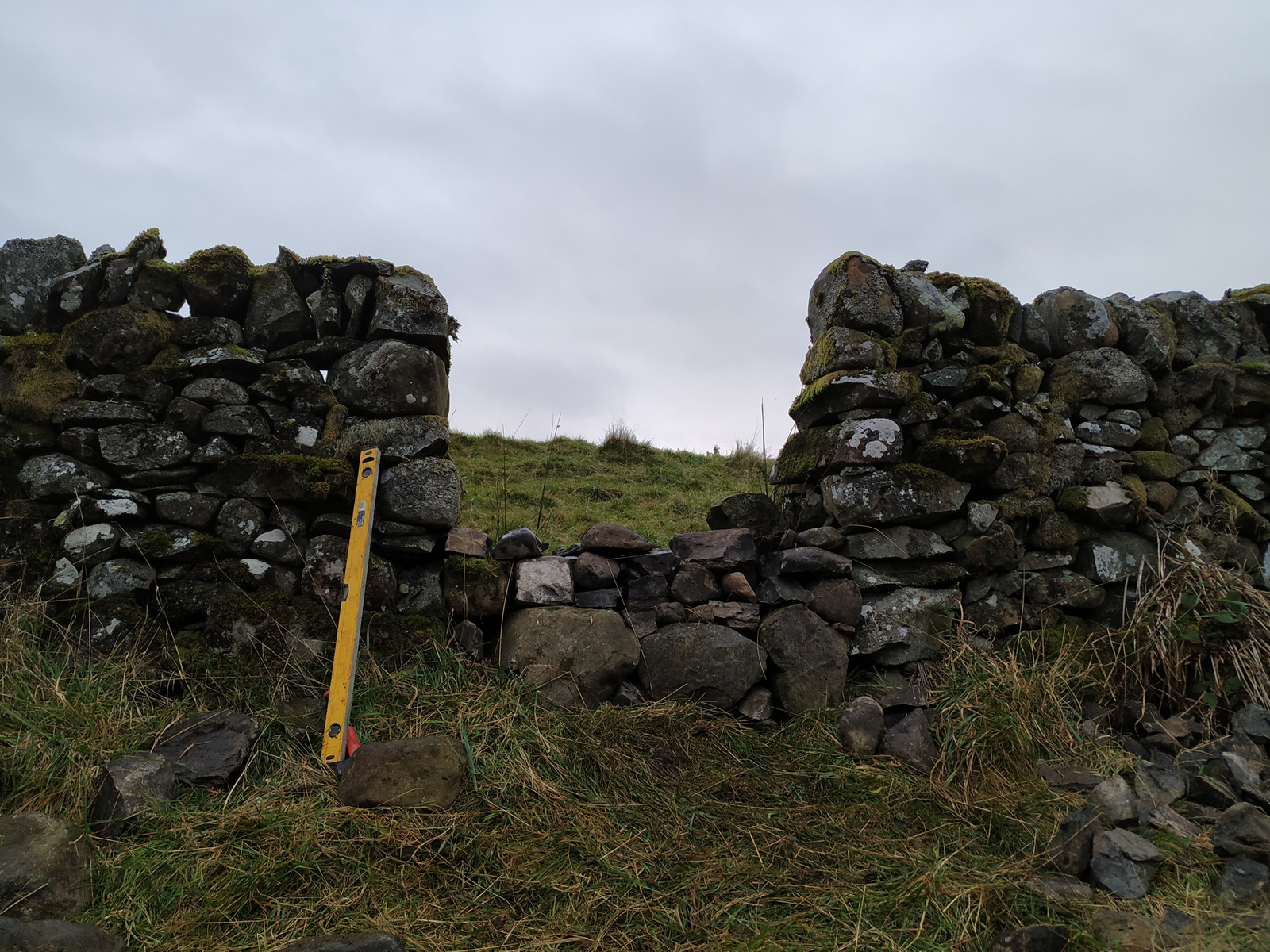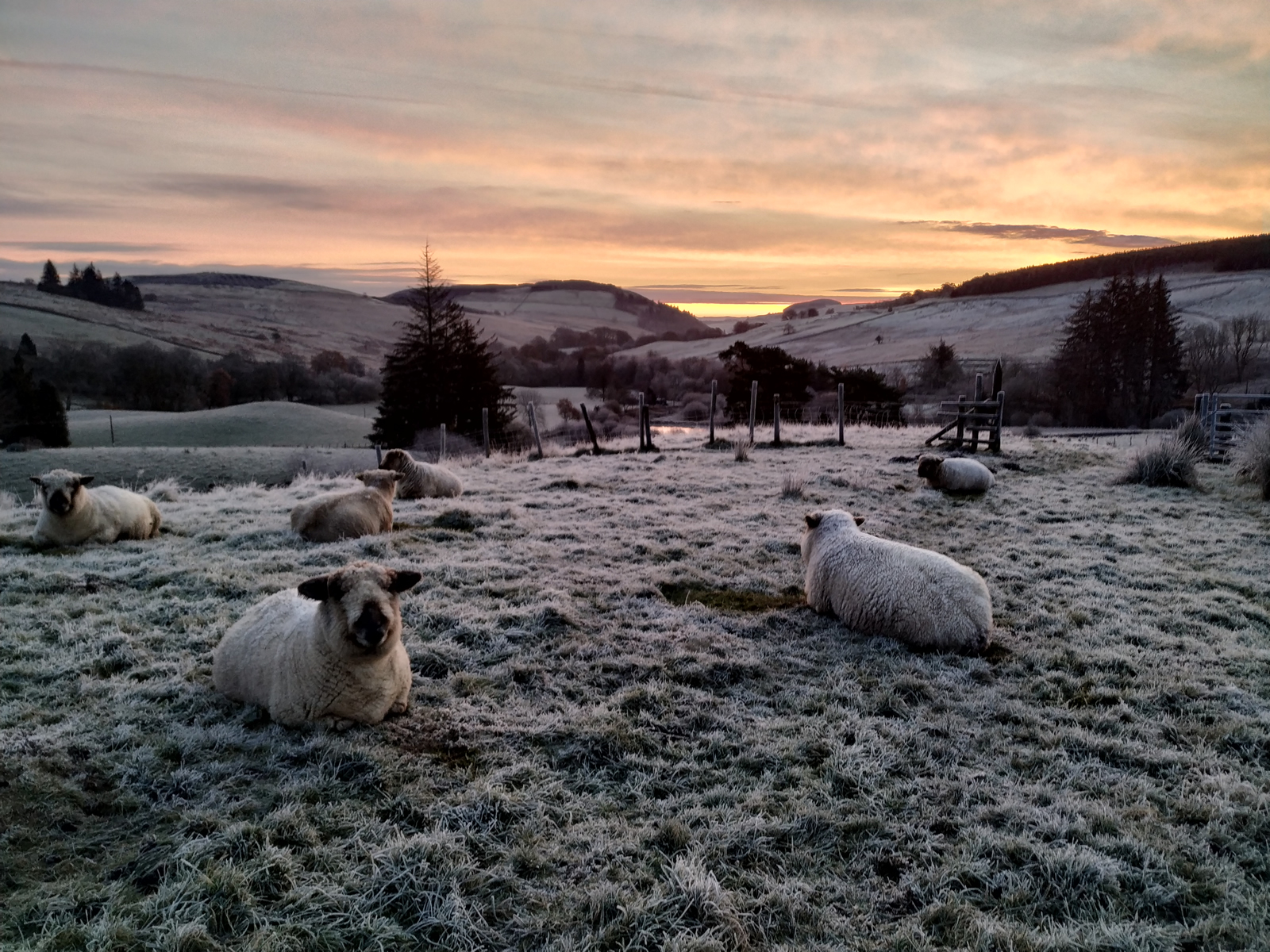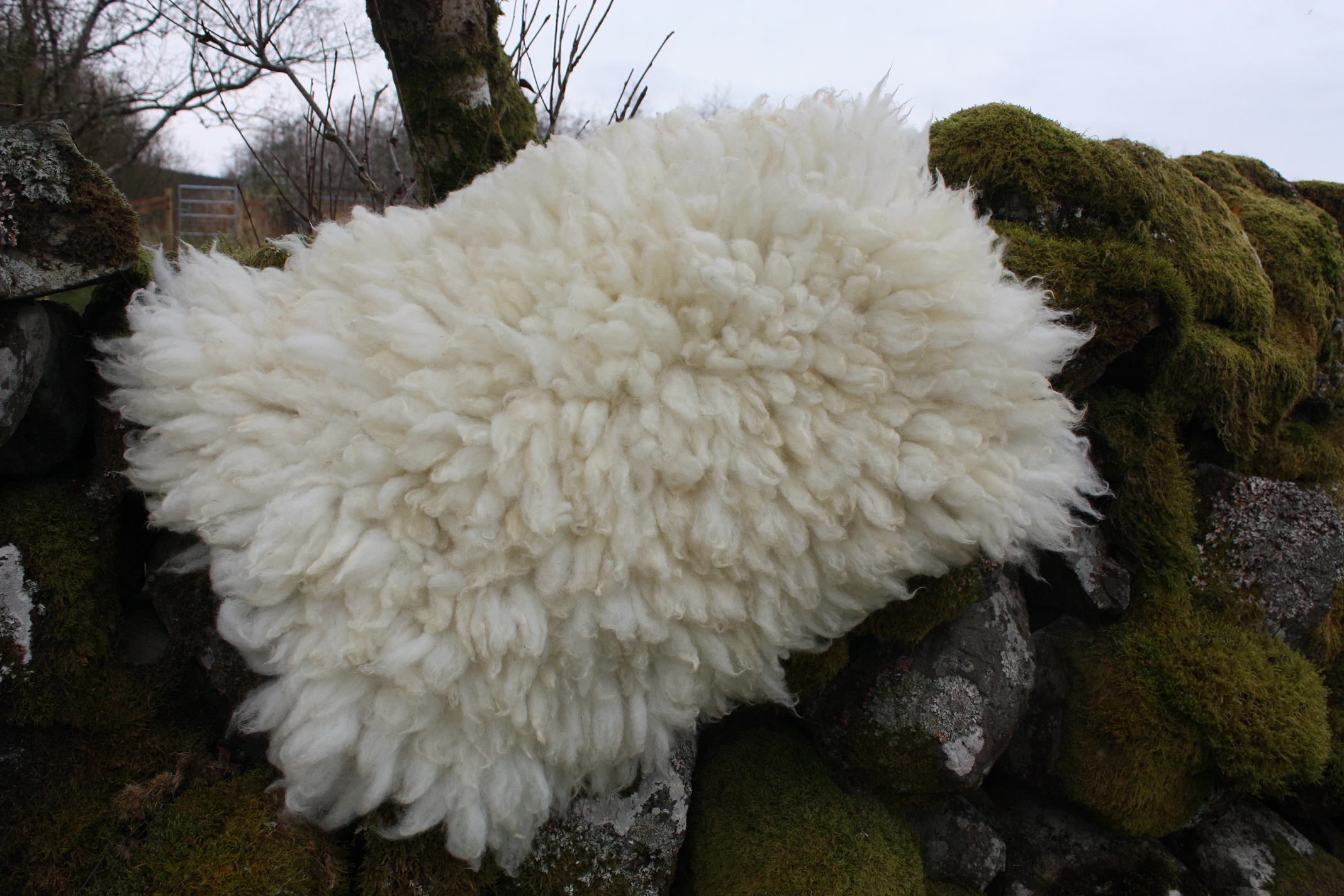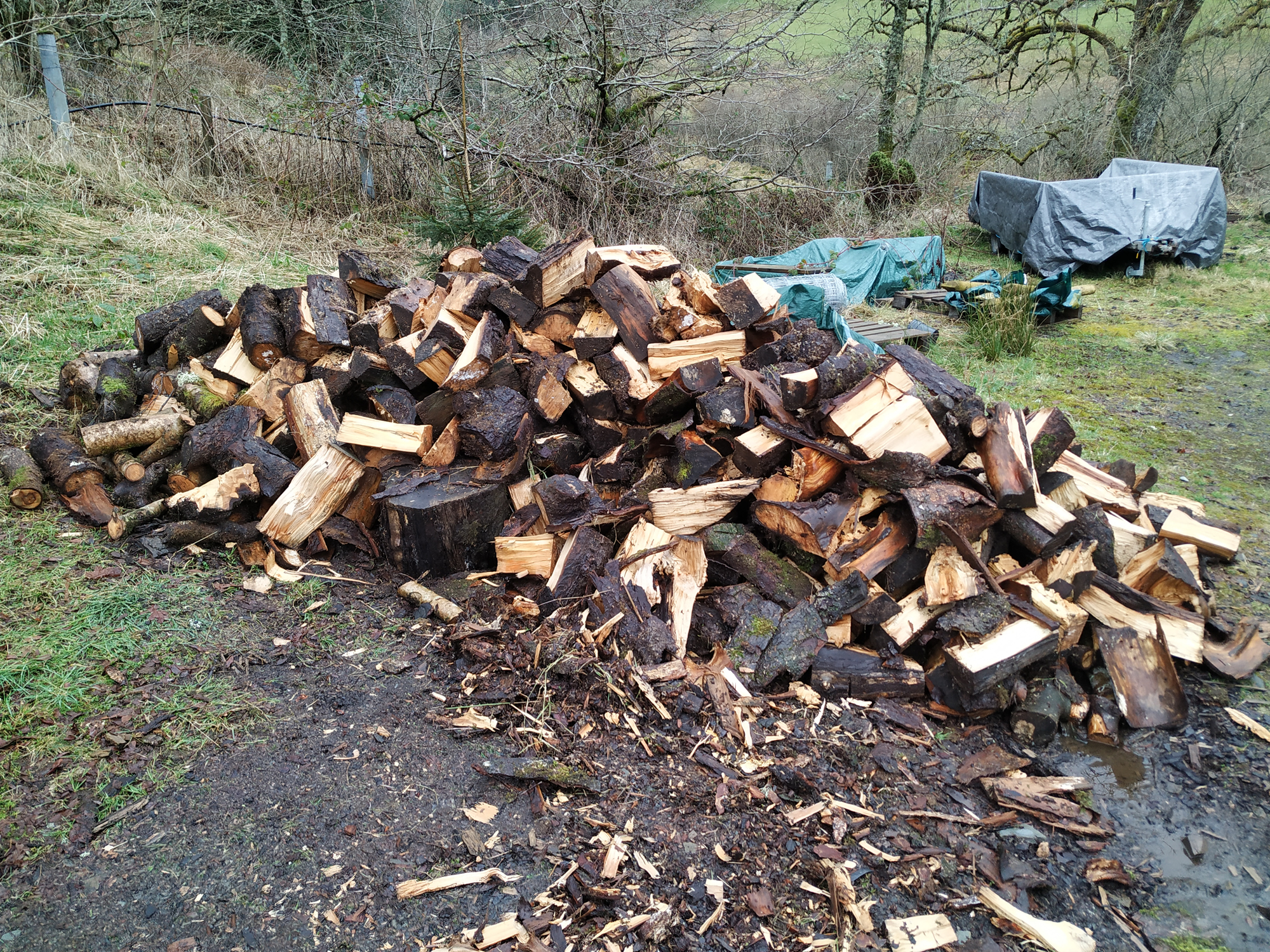
Our heating runs mainly on wood. We have a woodburner which also acts as a boiler. This means we can get through a fair amount of wood each winter. In turn, this means much chopping of logs.
 During the winter of 2018/19, a number of trees blew down in thw winter storms. These were gathered last spring and left in a pile awaiting action. So, in a break in the relentlessly damp, rainy winter, I blew the dust off the chainsaw, managed to get it started and set to work. The first task was to chop all the branches into log lengths. This always takes longer than you’d think, but eventually, the branches were transformed into choppable logs.
During the winter of 2018/19, a number of trees blew down in thw winter storms. These were gathered last spring and left in a pile awaiting action. So, in a break in the relentlessly damp, rainy winter, I blew the dust off the chainsaw, managed to get it started and set to work. The first task was to chop all the branches into log lengths. This always takes longer than you’d think, but eventually, the branches were transformed into choppable logs.
These then needed to be transported to the house about 400 meteres away. For this, I used the tractor – the logs were loaded into the front loader. The best part is that at the house, I could just tip them out (rather than manually unloading them).

That done, I rested a few days. It turned into a few weeks as the rain just kept coming. Finally, a dry day arrived. We share ownership of a petrol powered log splitter betweem three of the houses here. I got that out and set it up. Even with that, it took most of the morning to split all the logs.
I needed another rest after that which was a mistake because back came the rain. Thankfully, with spring approaching, drier weather was forcing its way through and a couple of days later, I got the wheelbarrow out and put the logs into the woodshed. They’ll be there till they dry out, ready for burning.
The downside is that I need to cut another two piles around the same size, so I will be coppicing some willow in the next week or so. In the meantime, I have planted around 1,500 trees so we should be carbon neutral.





